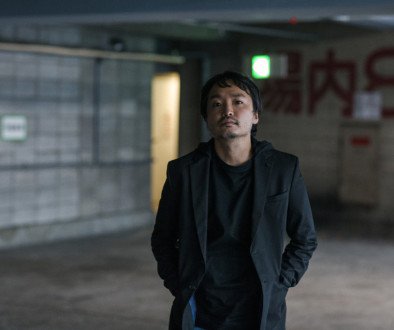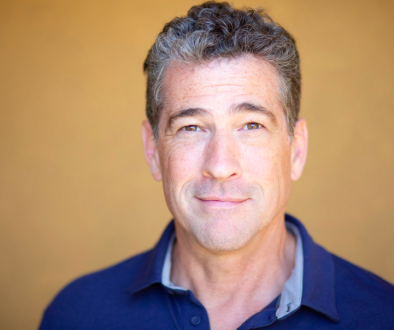DIABLO Director Talks Cinematic Inspirations and Working With Scott Adkins & Marko Zaror
For fans of international action cinema, a new project from director Ernesto Díaz Espinoza is always an event. The Chilean native has consistently put out high-quality films that span a variety of genres, imbued with a strong sense of Latin culture, for nearly two decades. Espinoza’s film resume of gangsters, revenge-seeking martial artists, secret agents, superheroes, and other genre archetypes would appear to be typical action fare at a glance but when they are experienced— his uniquely South American perspective, and love of idiosyncratic details, create a thrilling one-of-a-kind viewing experience that audiences can’t get anywhere else.
Espinoza’s latest offering (and first fully English-language film), DIABLO, finds him reunited with frequent collaborator, and martial arts phenom, Marko Zaror (JOHN WICK CHAPTER 4, FIST OF THE CONDOR) while also adding DTV action king Scott Adkins (JOHN WICK CHAPTER 4, ACCIDENT MAN: HITMAN’S HOLIDAY) to the proceedings. DIABLO tells the story of an ex-con (Adkins) who, after kidnapping a Colombian mob boss’s daughter (for suitably noble, yet mysterious, reasons), is pursued by a psychotic, metal fist-wielding hitman (Zaror). It is a lean, propulsive chase film punctuated with beautifully filmed, bruising action sequences. DIABLO is highlight work for all involved— a treat for long-time supporters and a perfect introduction to Ernesto Díaz Espinoza’s cinematic work for newcomers.
I had the opportunity to sit down with Ernesto Díaz Espinoza last week, before DIABLO’s release, and talk with him about his working relationship with Marko Zaror, his film inspirations, and more.

Every film you have directed has played with well-worn genres and archetypes: secret agents, revenge-seeking martial artists, and superheroes, to name just a few examples. Yet, all of your work is distinctly “you.” How would you describe your cinematic style— that unique flavor you bring to the material
That’s a very difficult question because it’s difficult for me to see objectively, you know?
Maybe it is because I try to give a heart to all my movies. That way, it’s not just fights and action and entertainment. I really try to get the audience involved with the characters and to go through the movie with them, and fight [beside] them and feel what they feel during the movie … Maybe that’s it.
And I’m a cinephile also. I like to add a lot of references [to my] movies, even if you don’t get them consciously, you know? Maybe it is something like that, but I’m not sure … I cannot see it from [the] inside.

Speaking of the homages and the references you put in your films, there are a lot of standout ones in DIABLO— ROLLING THUNDER, ENTER THE DRAGON, THE TERMINATOR. What are some other genre films that inspire you?
Well, there’s a lot of martial arts movies obviously, kung fu movies, the classics, especially Bruce Lee. Because I’m from Chile— in Chile, we had so little … The shelf in the video rental store was so small, man. We had just a few movies to rent. So when I started making martial arts movies, I started watching more martial arts movies. And then with the internet, I had access to stuff like the ONE-ARMED BOXER and MASTER OF THE FLYING GUILLOTINE. I saw those movies just 10 years ago, not before.
[My work has those] big references now, but the movies that made me were the classic action 80s movies like FIRST BlOOD, the Rocky movies, Indiana Jones, and especially I’ll say, the [James] Bond movies.

That explains a lot about your film, MANDRILL, that you also made with Marko.
Yeah, I love the action scenes of those [Bond] movies. Because I started watching them [when I was] so little, I was really amazed even with the early ones, you know, the Sean Connery ones. Now the action scenes haven’t aged well, but I enjoyed them anyways because I was so young when first watching them.
[Those movies have] great action scenes like the beginning of MOONRAKER when James Bond… somebody throws him from an airplane without a parachute; it was copied in POINT BREAK. That scene, for me, was something huge, you know? And talking about martial arts specifically, I’ll say Jet Li movies. And also KILL BILL is a big influence because it came out right before I was going to make KILLTRO. I love Tarantino. He’s one of my favorite directors.
I also love Japanese cinema, especially Takeshi Kitano, Takashi Miike. And yeah, I even like David Lynch. I don’t know if you can connect that with my movies, but a lot of my atmosphere and sound design I took from him.
I definitely see it, because, like I said, your films have a very unique quality, especially the early ones. They have almost a dream-like feeling to them. I feel Lynch’s influence there.
Yeah!
Yourself and Marko Zaror have been collaborating on films together for almost 20 years now. How has that working relationship changed and grown over the years?
It has evolved nicely because now we can understand each other really fast now, you know? Sometimes we don’t need to talk and we just know, “Okay, yeah.” [It can] just be a nod or whatever. You know what I mean? We really understand each other’s taste for things. So, “No, no, [Marko’s] not going to like this. He’s not going to like this other thing.” He knows the same with me… “I think Ernesto is not going to like this kick,” for example, or whatever part of the choreography. Because now he also understands the tone of the movie that we are making when he’s creating the choreography. He manages very well now with that stuff.

How did adding an outside, established star, like Scott Adkins, into the mix affect that?
Scott is a cinephile, too. I was not surprised, but happy that he was. He also made movies when he was a kid with his friends, homemade movies— homemade action movies, as I did with Marko. So we have a lot in common. I saw in Scott an action director too. I mean, he for sure could direct his own movies. He knows so much about action scenes, after working in more than 60 or 70 movies, also because he studies. You know, he watches action scenes again and again, he watches the making of the scenes.
So we ended up getting to be really good friends and we want to make more movies together. He was a big part of [DIABLO] because of his experience and also he’d help with the choreography. He taught us a lot of ways of how to solve stuff on the set. So [it was] great.
Well, I certainly hope the three of you work together again, because you did such a wonderful job of capturing Scott’s physicality and screen presence, as you do with Marko every time. As we wrap up, I wanted to ask about your previous collaboration with Marko, FIST OF THE CONDOR. That film ended on a bit of a cliffhanger. Will we see that story continued?
That’s the idea. Yeah, we need to see the end of that story for sure. That’s what we want and we are working towards that.
Well, I know a lot of fans, myself included, definitely want that, too. Congratulations on the release of DIABLO. I think it’s a great film and I can’t wait to see what you do next.
I’m glad, man. I’m honored [that you like it]. I know how fond you, and your audience, are of this genre. Thank you so much for supporting us over the years.
DIABLO is currently In Theaters, On Digital and On Demand.
Matthew Essary has been a professional film critic since 2017 and a film fanatic for much longer. Currently residing in Nashville, TN, he also co-hosts the film podcast "Video Culture" (available on all podcast platforms). He can be reached at "WheelsCritic@gmail.com" and on Social Media at https://bsky.app/profile/wheelscritic.bsky.social





